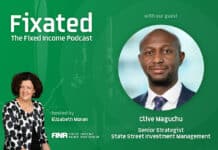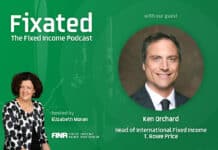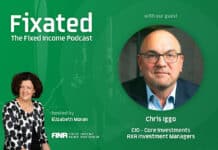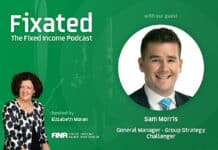
-
The Fed chose a bold first move to ensure the “soft landing” can remain soft. The ensuing trajectory remains very dependent on the US elections outcome though.
-
The ECB still sounds more cautious, even if they started easing earlier. We think they should be more decisive.
-
Bond returns to be lower.
-
Equities benefit from soft landing.
-
Policy uncertainty main risk.
What could be in store for bond investors
The US soft landing scenario coupled with the pricing of interest rate cuts in most major economies is providing a benign backdrop for financial markets in the final quarter of 2024. Bond markets, in particular, have delivered strong returns over recent months, reflecting the aggressive shift in central bank rate expectations. Given pricing is now coincident with what most observers suggest could be the level of terminal rates in this cycle, it is likely that fixed income total returns will moderate into year-end. However, 2024 has shown that after a decade-plus of very low yields, investors should have a significant weighting of fixed income in portfolios. The traditional 60:40 approach to investing has certainly reaped dividends this year.
Long-term bond yields are most likely close to fair value levels, both reflecting the likely path of short-term interest rates towards a neutral monetary policy stance, and the likely path of nominal GDP growth. A simple model that regresses the level of 10-year US Treasury yields on a medium-term moving average of nominal GDP growth points to yields in the 4% area. Deviations from that are explained by the cycle and by risk premium considerations.
The Fed’s implied interest rate path suggests a terminal rate of around 3% in the next one-to-two years. After November’s US presidential election, the US medium-term fiscal outlook could start to have more of an impact on bond prices. Even today, Treasury yields are higher than swap rates at the long end of the curve, suggesting some risk premium is already evident. Neither presidential candidate has addressed the long-term fiscal outlook and both programmes, as they stand, are likely to mean continued high levels for the federal deficit and for borrowing. As such, the risk premium in Treasury yields could widen further.
Also read: To Find the Bust, You Need to Find the Boom
Bond investors are still likely to find some reward in being positioned for more yield curve steepening. The spread between 10-year and two-year Treasury yields is again positive after being negative since mid-2022. Some further decline in short-dated yields is possible as is some increase in 10-year yields into the post-election period. However, strong duration-driven positive returns from the US market look more difficult to achieve in the coming months.
Credit remains in favour
Much is priced into rates curves. Fixed income value sits more with credit where there continues to be opportunities for income investors. Corporate bond fundamentals are healthy given the decent earnings backdrop, manageable leverage levels and the improved financing backdrop. A year ago, the difference between the prevailing yield (the cost of new borrowing) and the legacy coupon (the cost of existing borrowing) in the European investment grade corporate bond market was 247 basis points (bps). Today, that spread has fallen to 92bps. This ‘refinancing premium’ has also fallen sharply in the US bond market. Companies needing to refinance debt can do so at more manageable levels today than was the case in the height of the interest rate hiking cycle. It is only in the lower-rated parts of the high yield bond market that the refinancing premium remains concerning (around 5% in the US CCC-rated sector). Access to private credit flows and the rise in distressed exchanges has allowed the default rate in high yield to remain lower than historical averages. Meanwhile, better-rated high yield companies are expected to continue to deliver attractive returns to investors given the positive credit backdrop.
Equity markets have upside given the soft landing
Given the strong returns from bonds in Q3, equity returns are potentially likely to be superior for the foreseeable future. The avoidance of recession is key as this will underpin earnings growth. There are questions over whether current consensus earnings expectations are too high – around 14% for the 12-month growth rate for S&P 500 companies – but earnings grew at a pace of 11% in Q2 and analysts seem to be suggesting the impact of artificial intelligence on earnings will be more evident going forward.
The Fed’s 18 September rate cut was well received by equity markets with both the Dow Jones and the S&P500 reaching record highs. Seasonally, equity markets tend to perform well in the final quarter of the year and the upcoming earnings season will be critical to this. The dominance of technology stocks in the US market faded in Q3, with a negative total return over the last three months compared to a 4.6% return for the S&P500 index as a whole. Strong guidance and numbers from leading technology companies would be a catalyst for a performance bounce and push the overall market to a full-year total return of near to 30%. Not that the Fed publicly cares about such things, but Chair Jerome Powell and company would be privately happy with such an outcome given the market has essentially legitimised the soft landing scenario.
































